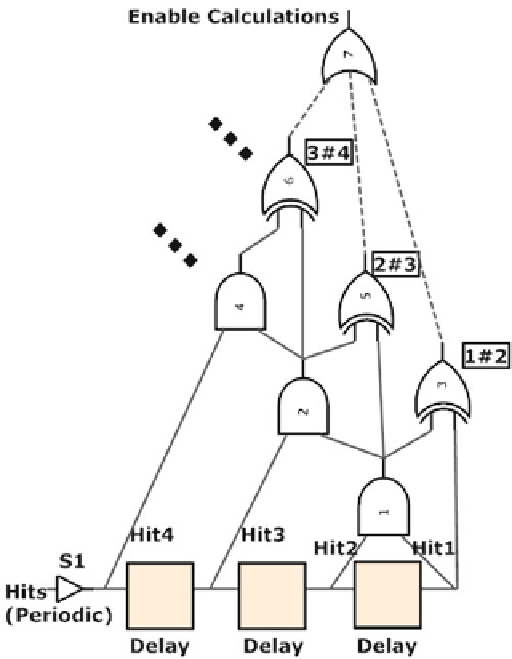Information Technology Reference
In-Depth Information
With multiple associative returns and a need for priority calculations and
selection, cycling is markedly slower. A small amount, perhaps 30 or 40 ms, is
taken for editing and memory access. Using 2 ms per neural gate, and 3 bits of
addition for priority, there is roughly 300 ms results for priority selections. Con-
sciousness would, in a worst case, come in flashes at a rate of one every 1/3 s
approximately. The stream of consciousness is not smooth under such adverse
conditions, but nonetheless is adequate for most real-world responses.
Enable Calculation Signal
This signal occurs whenever a group of associative returns are standing by waiting
for processing. This implies that returns can be identified as a group so that when
the entire group is available, the processing begins. The author visualizes a digital
filter that detects the end of a group of returns. This could signal the beginning of a
priority calculation (see Fig.
6.11
for the case of three returns maximum in a group).
This approach is easily expanded.
Fig. 6.11
Detecting the end of a group of returns for the case of three returns maximum

Search WWH ::

Custom Search